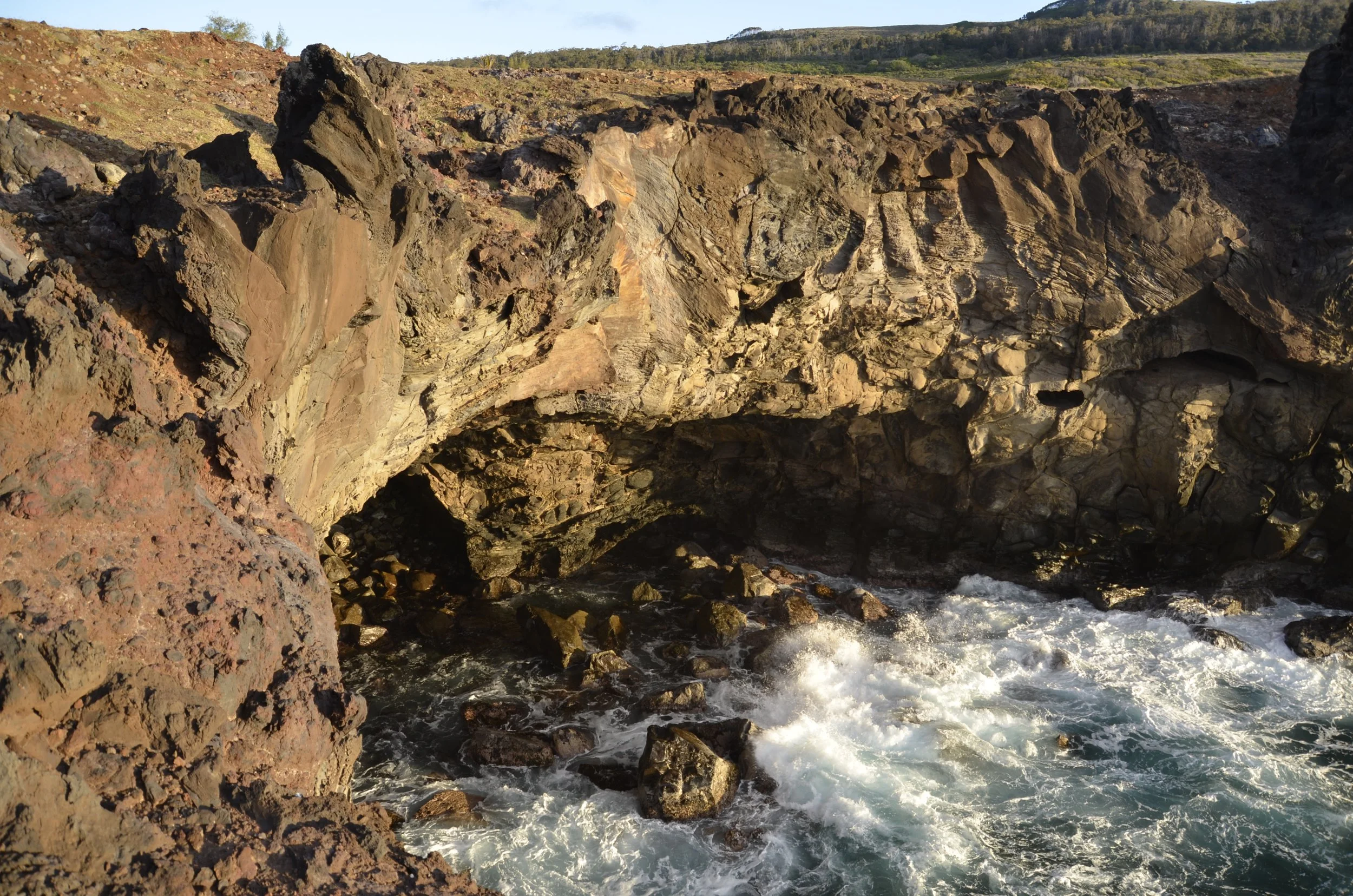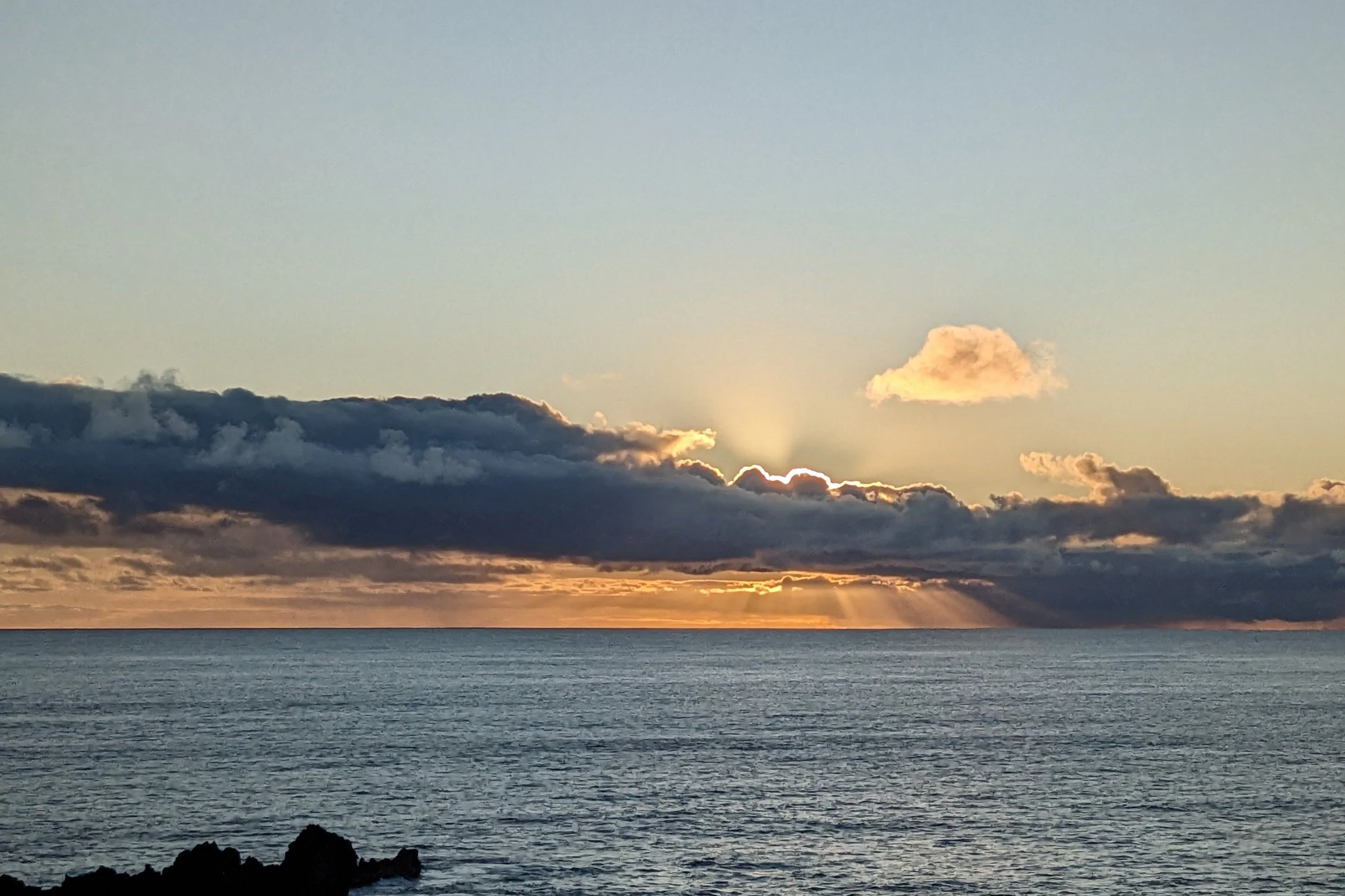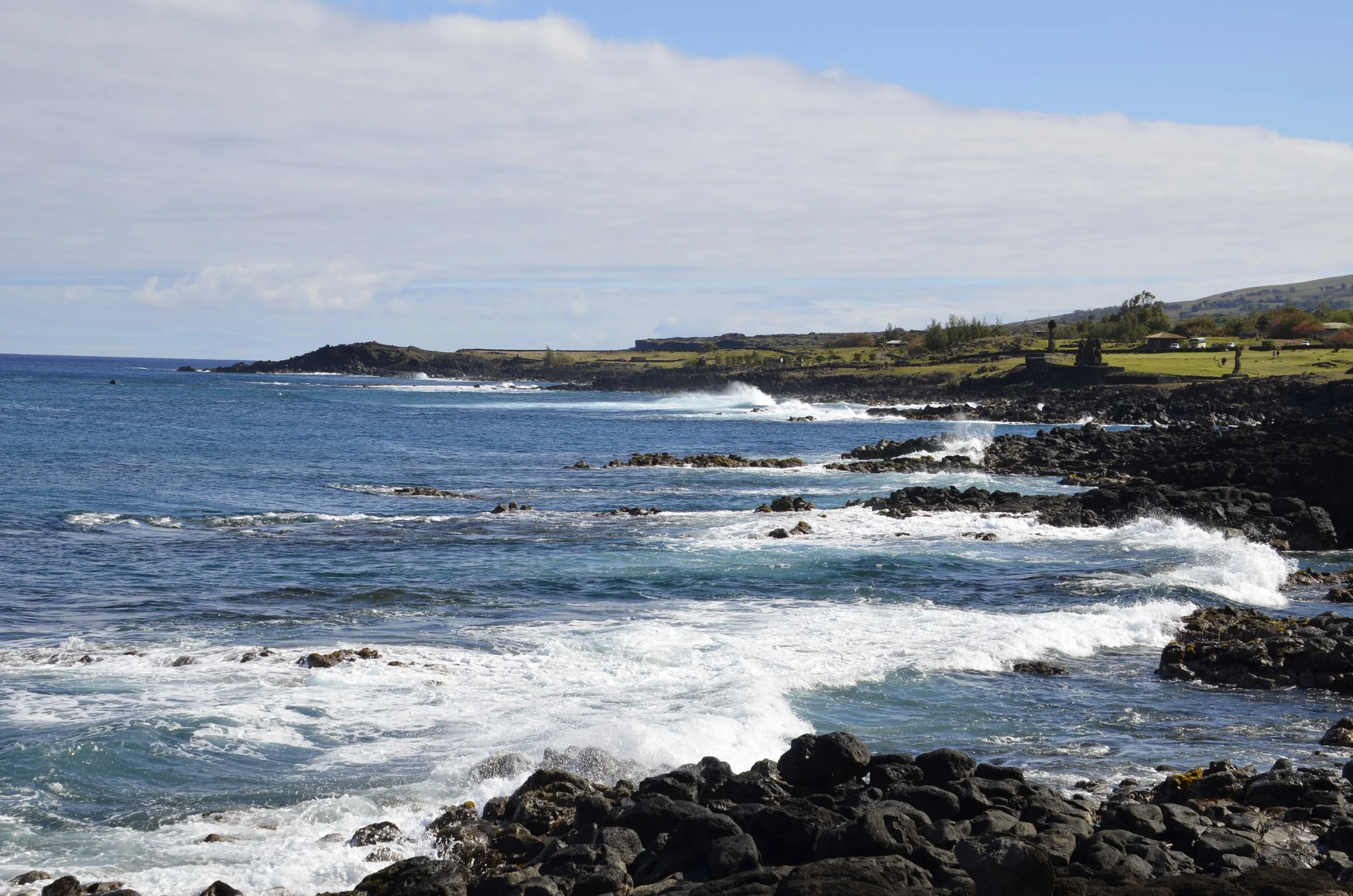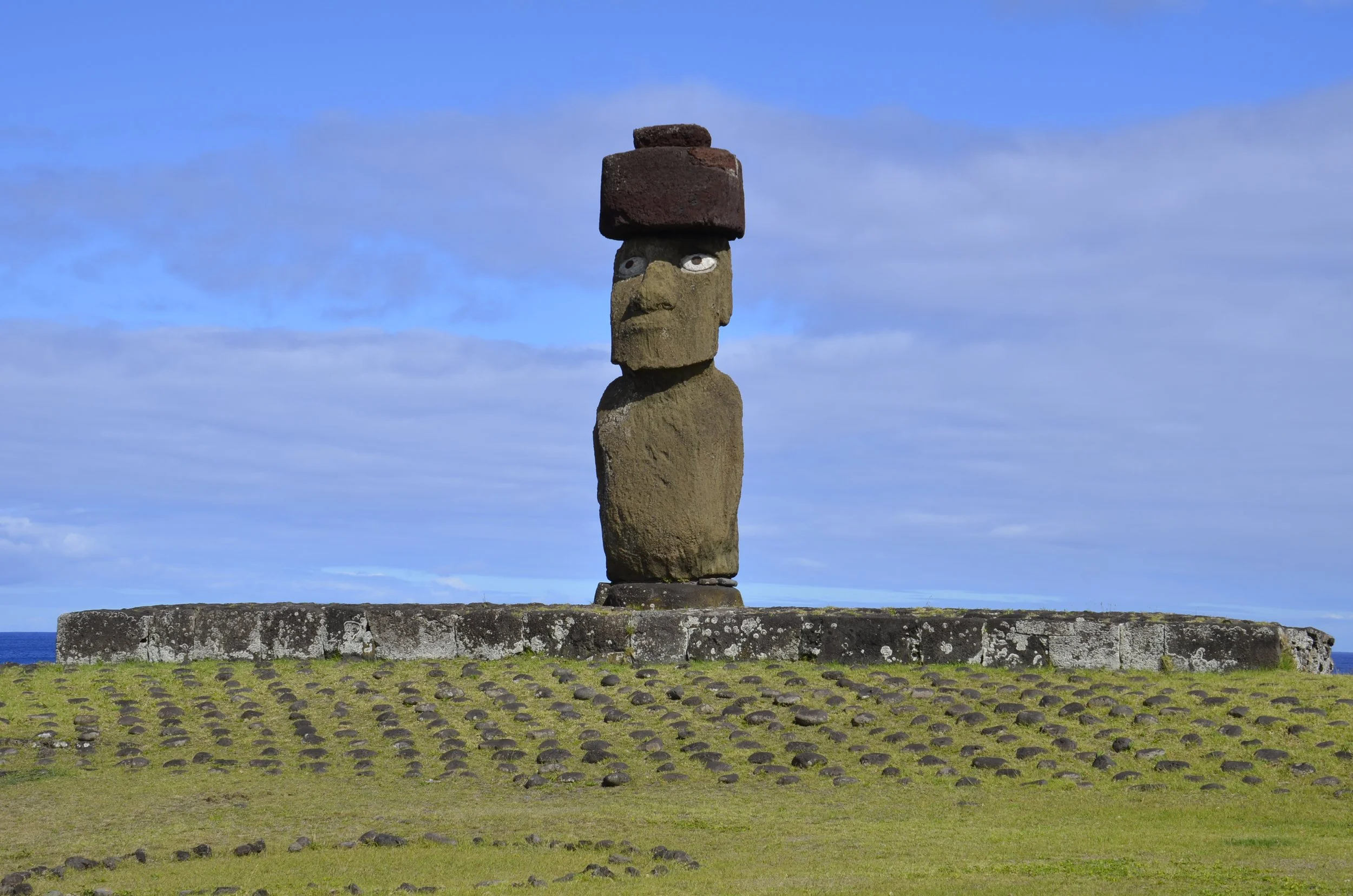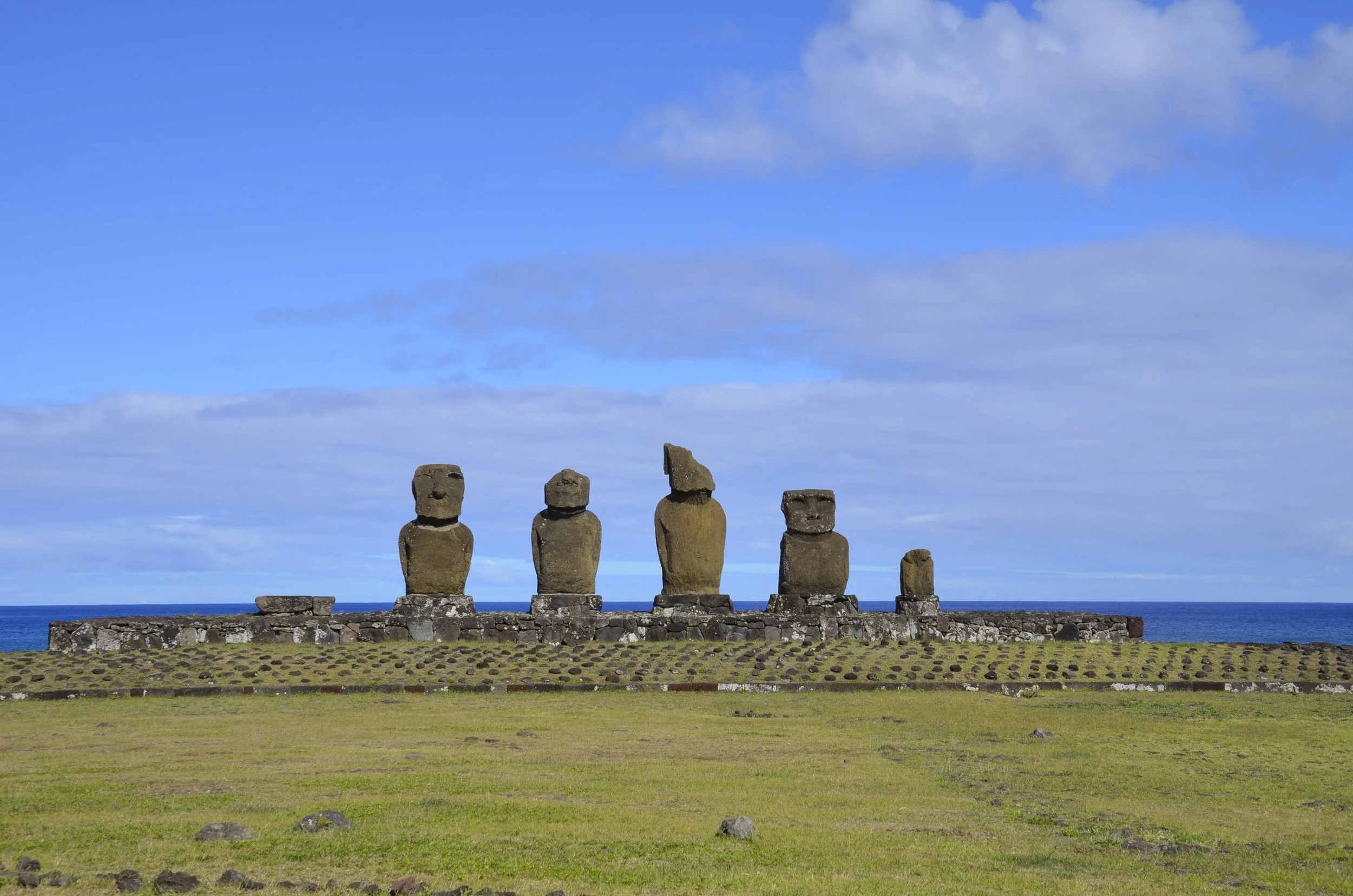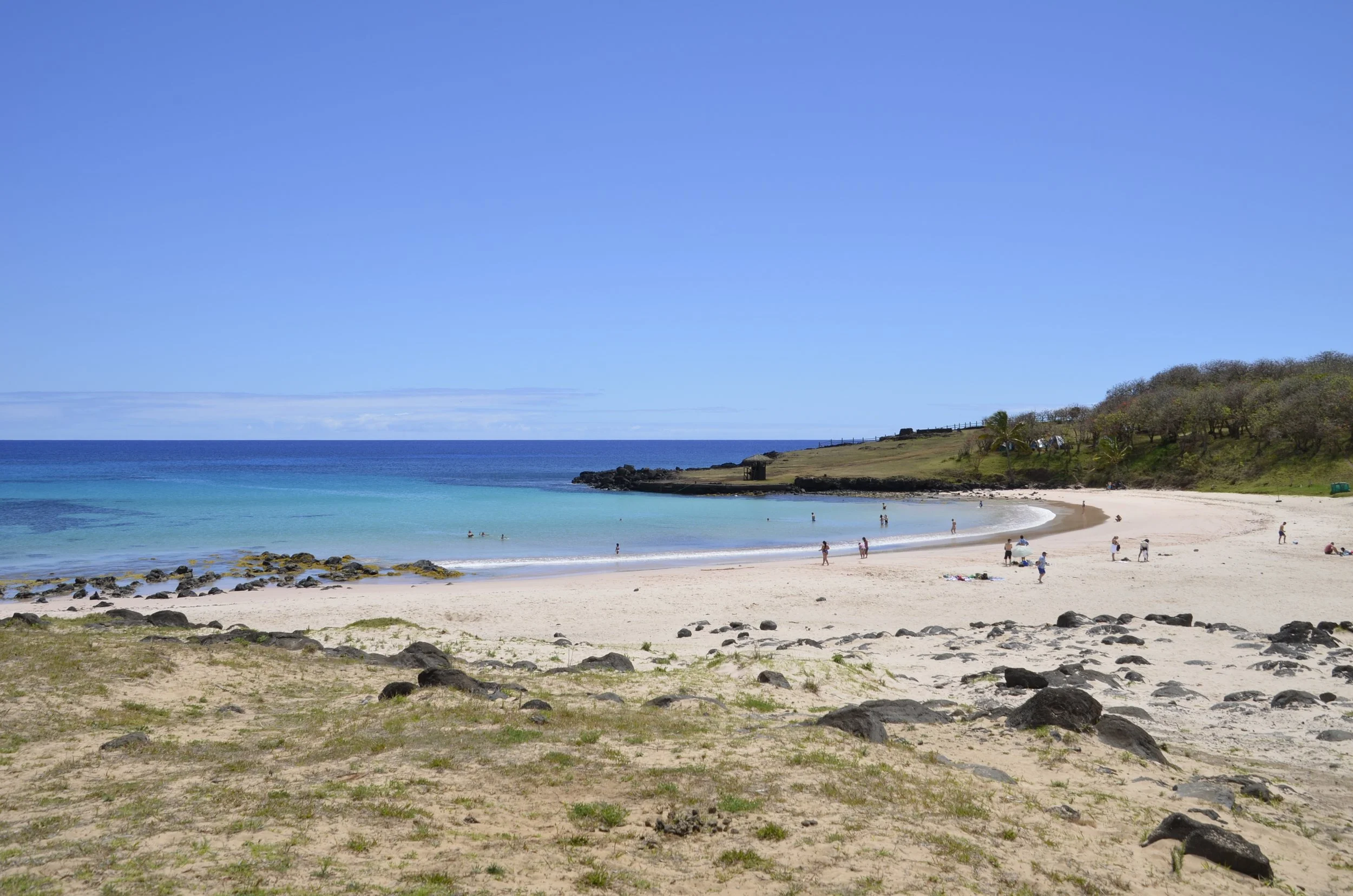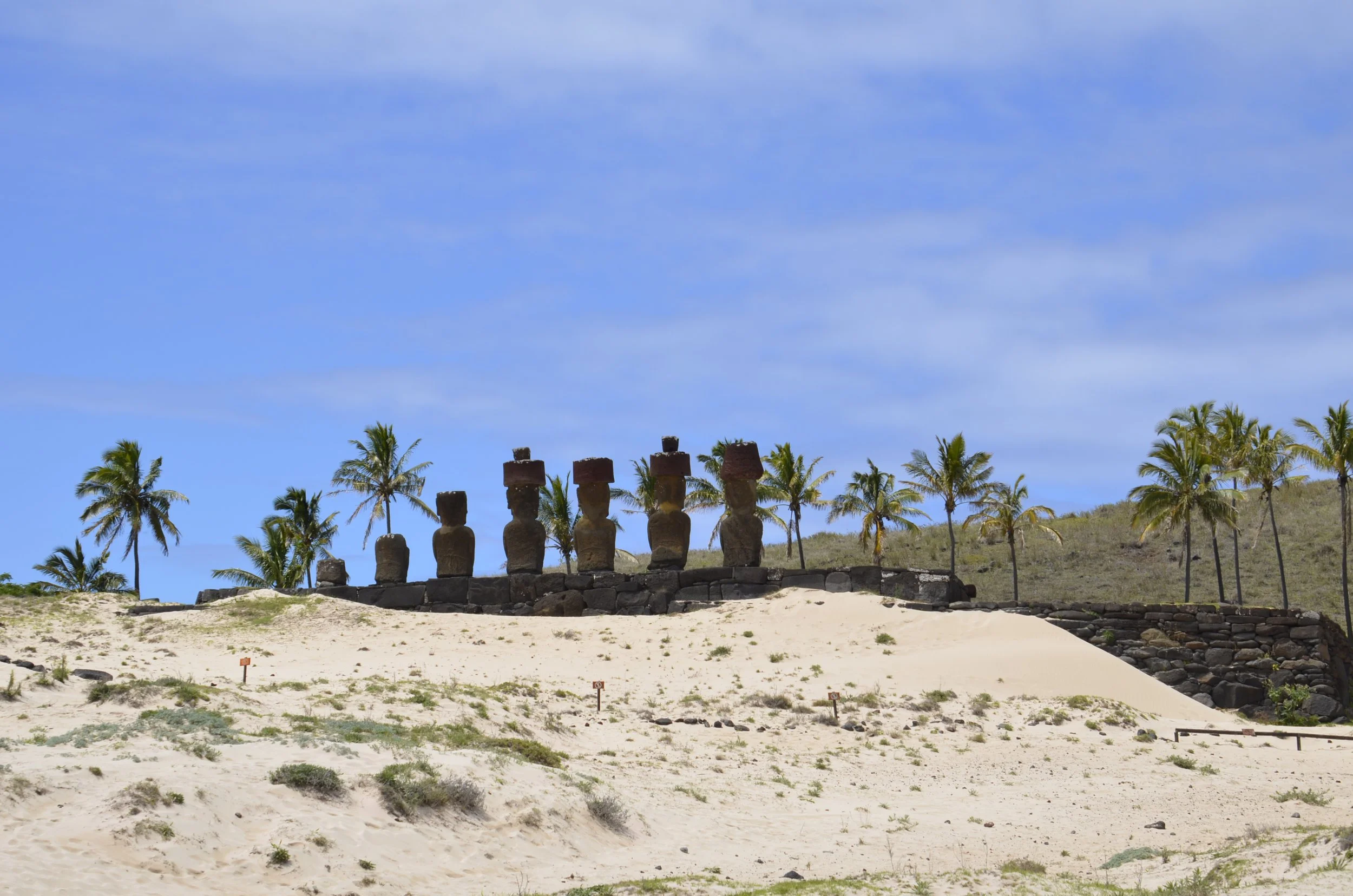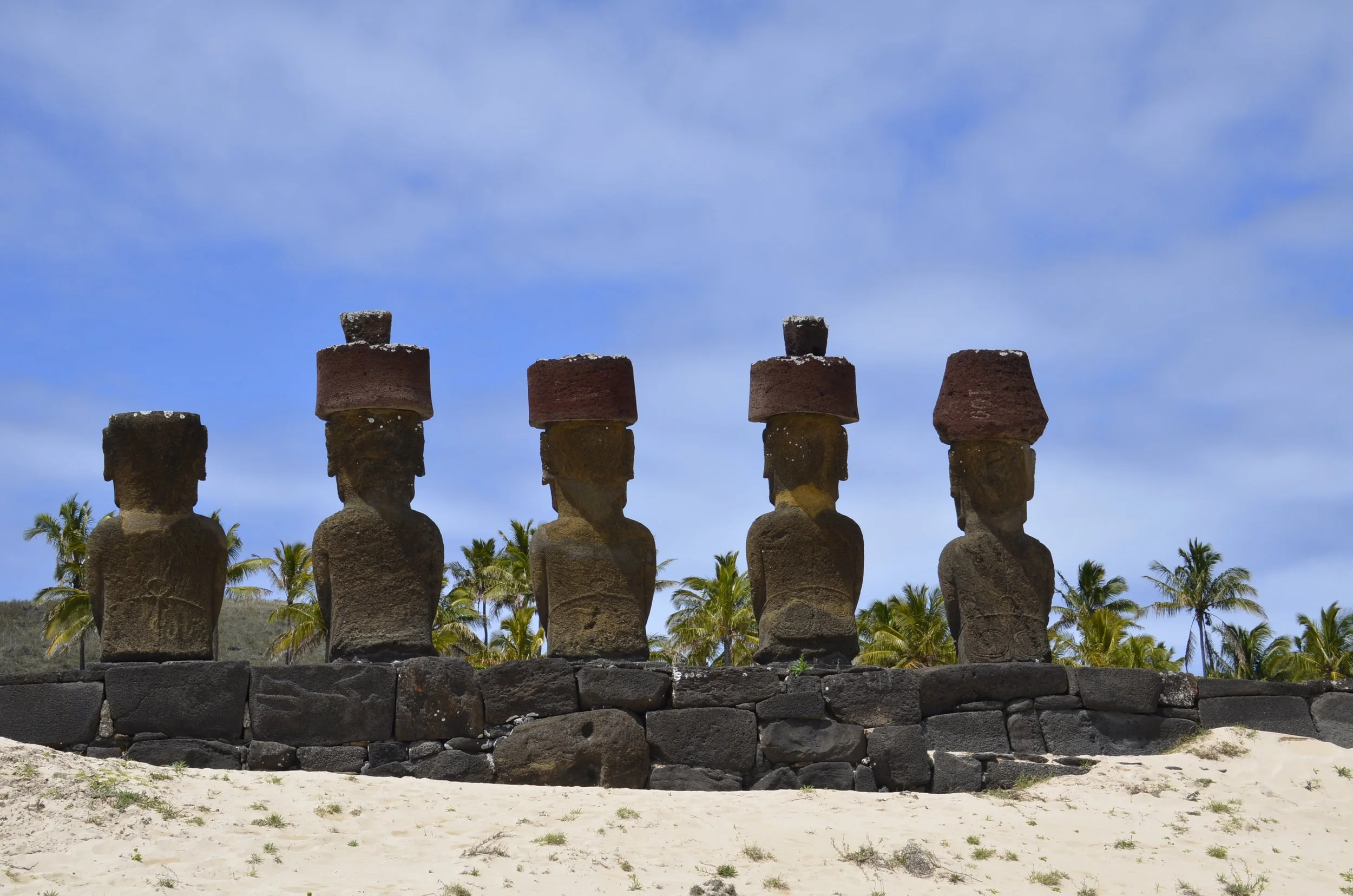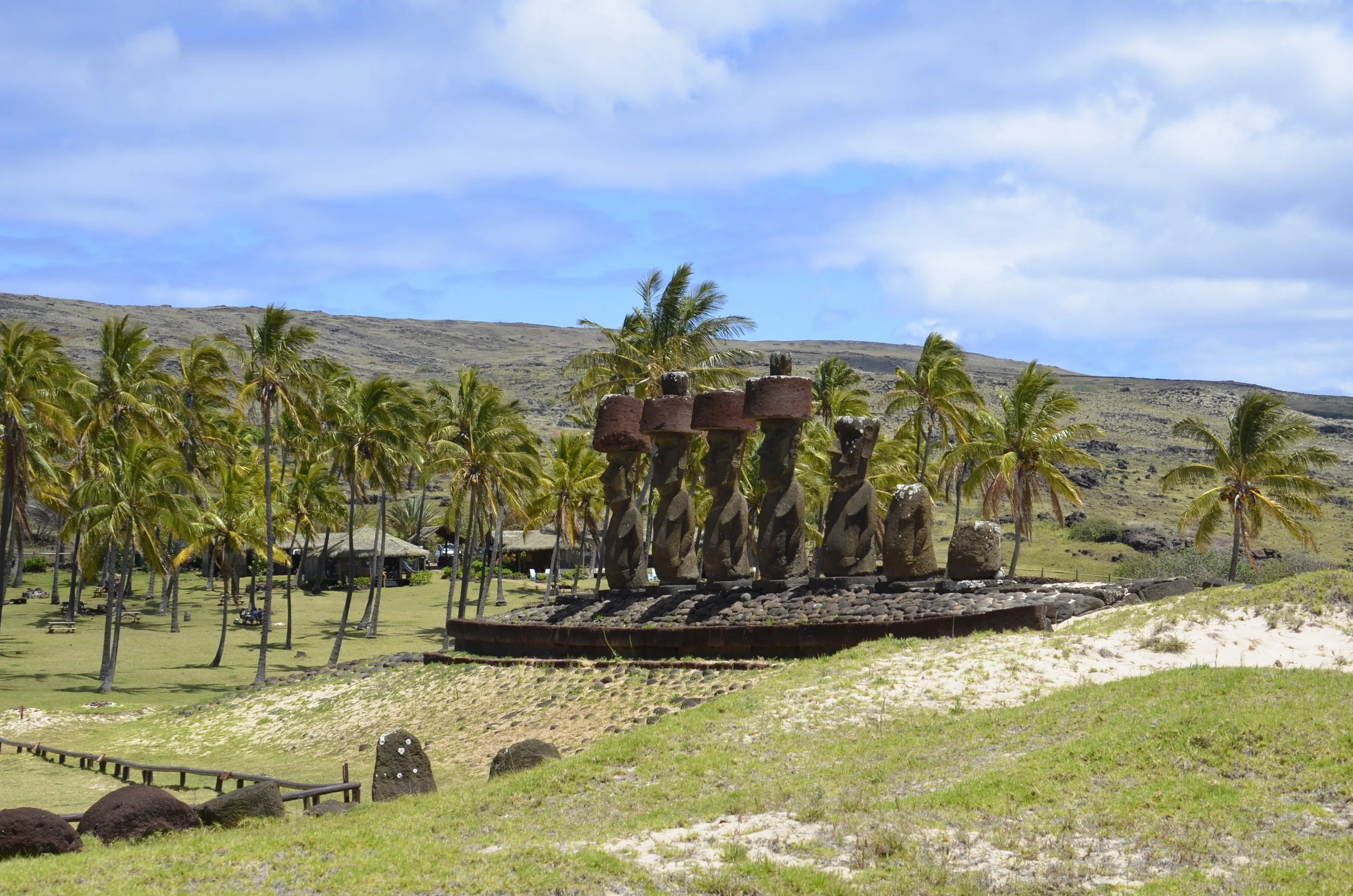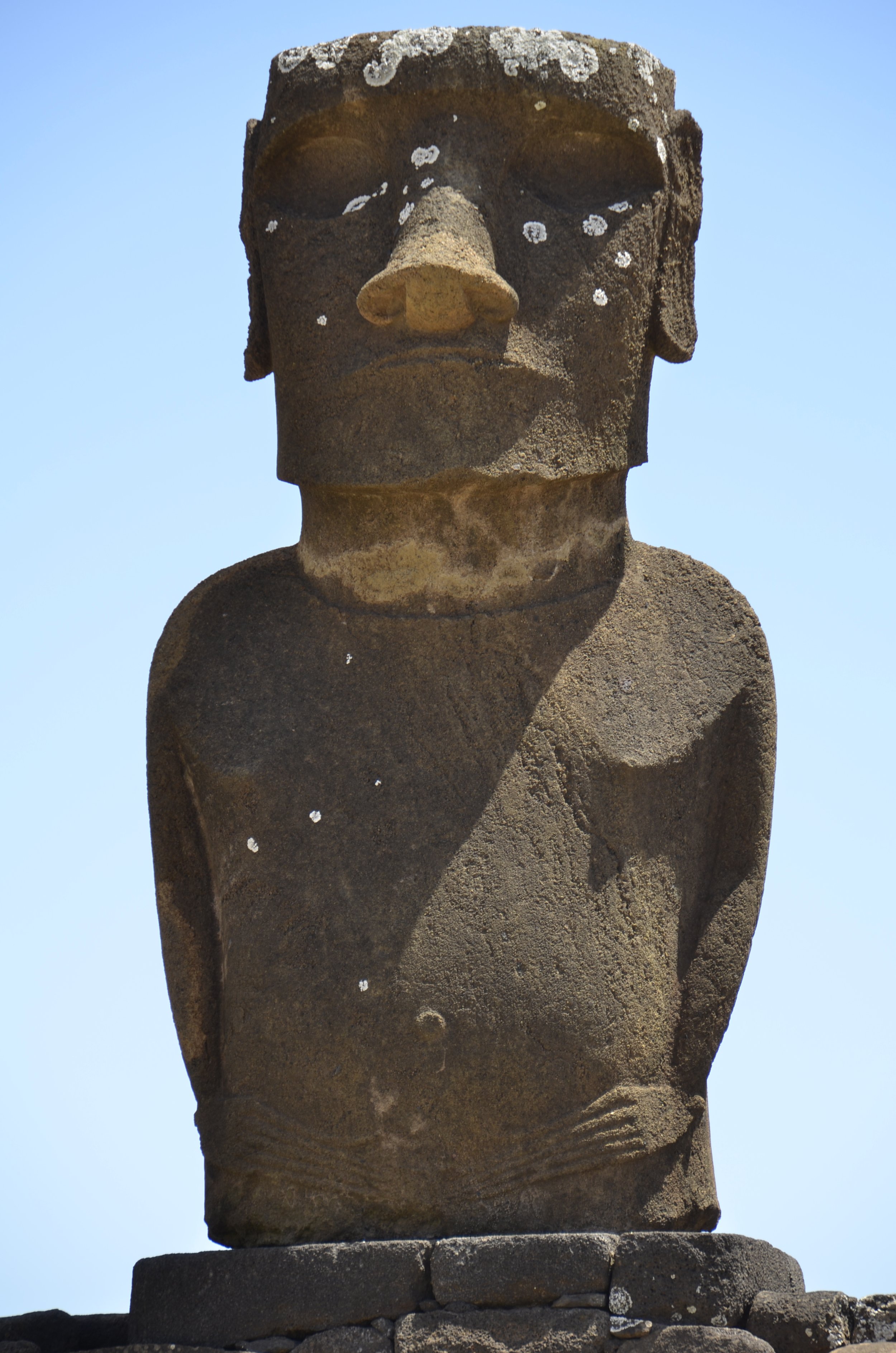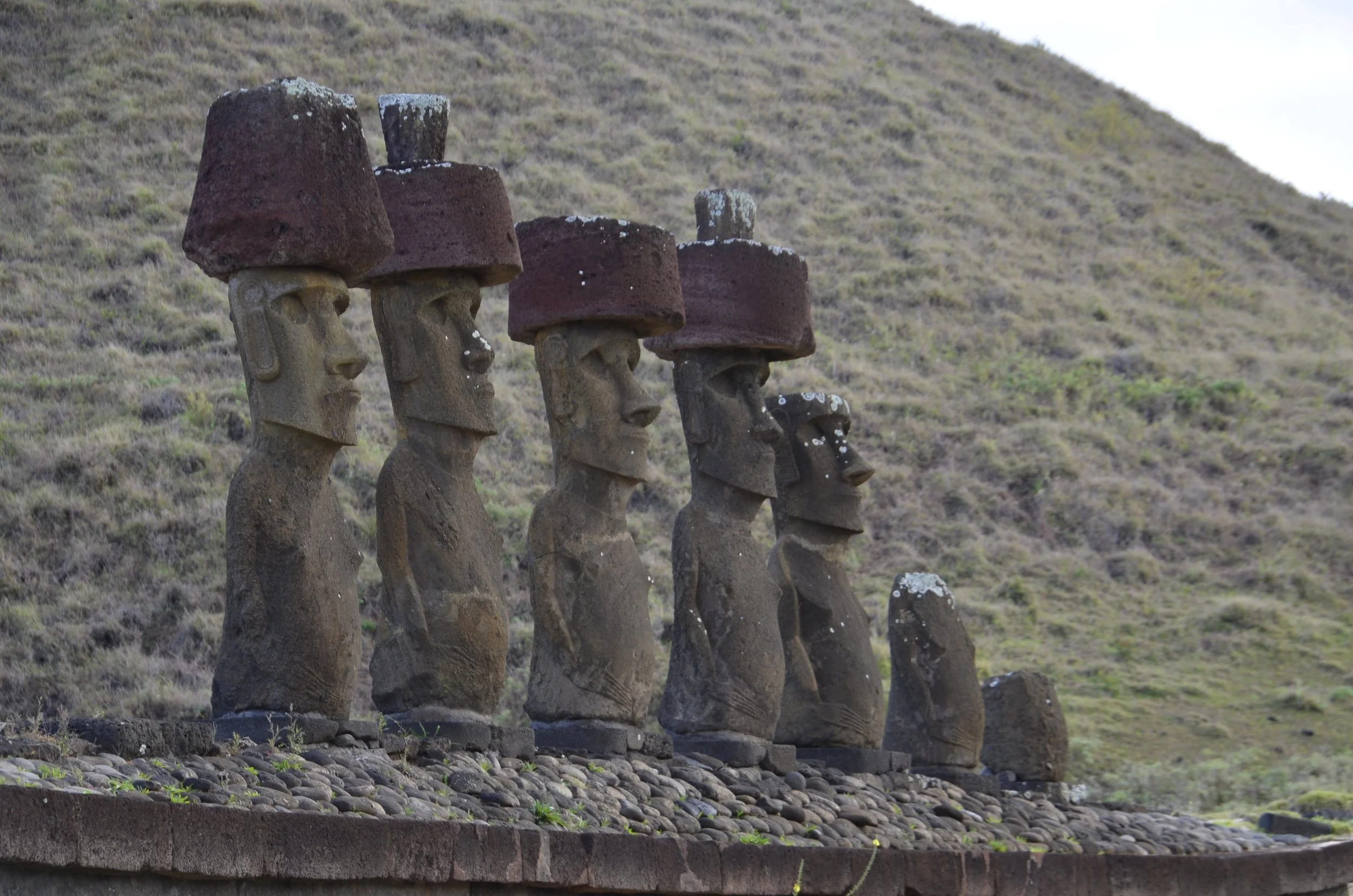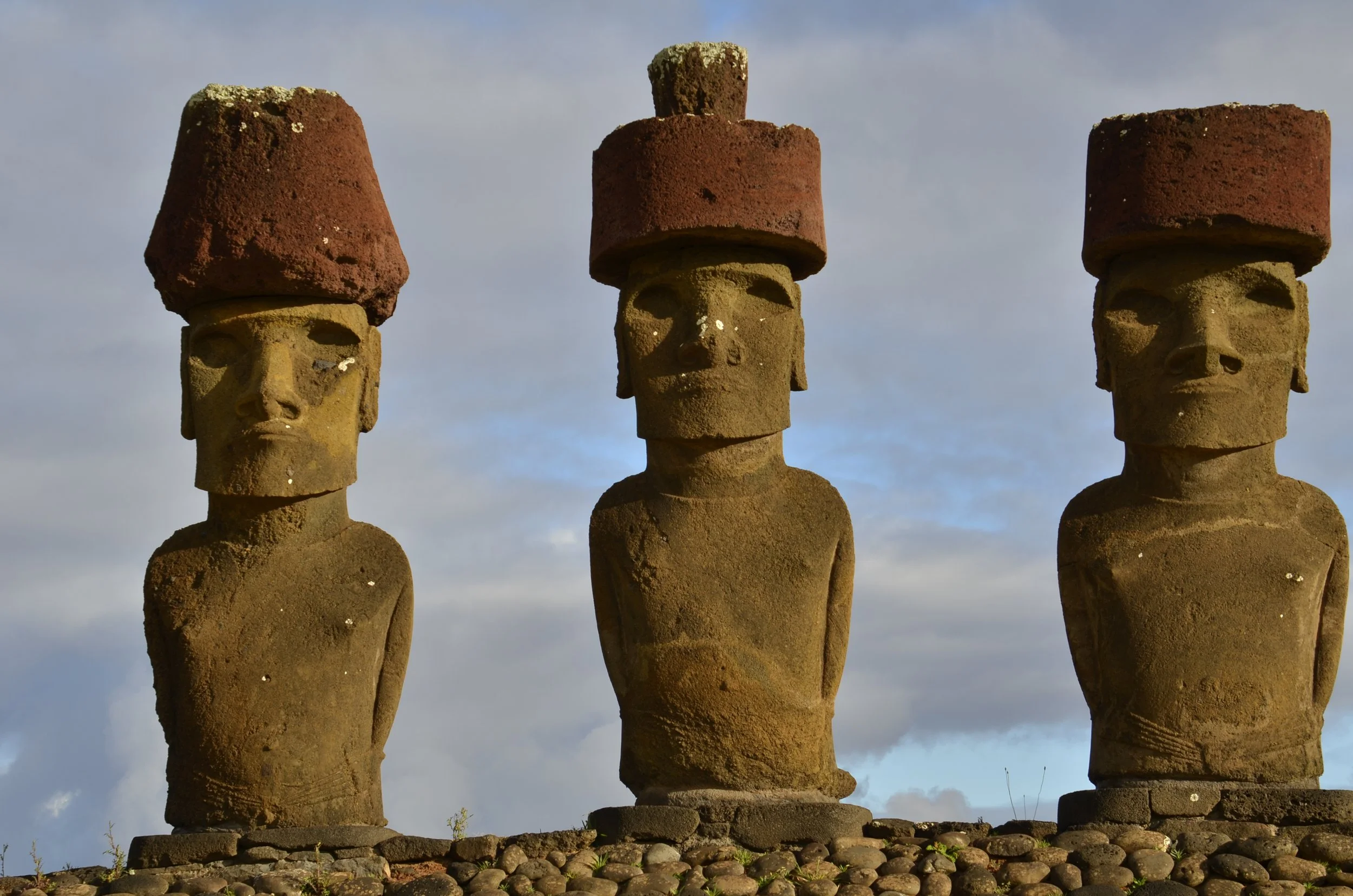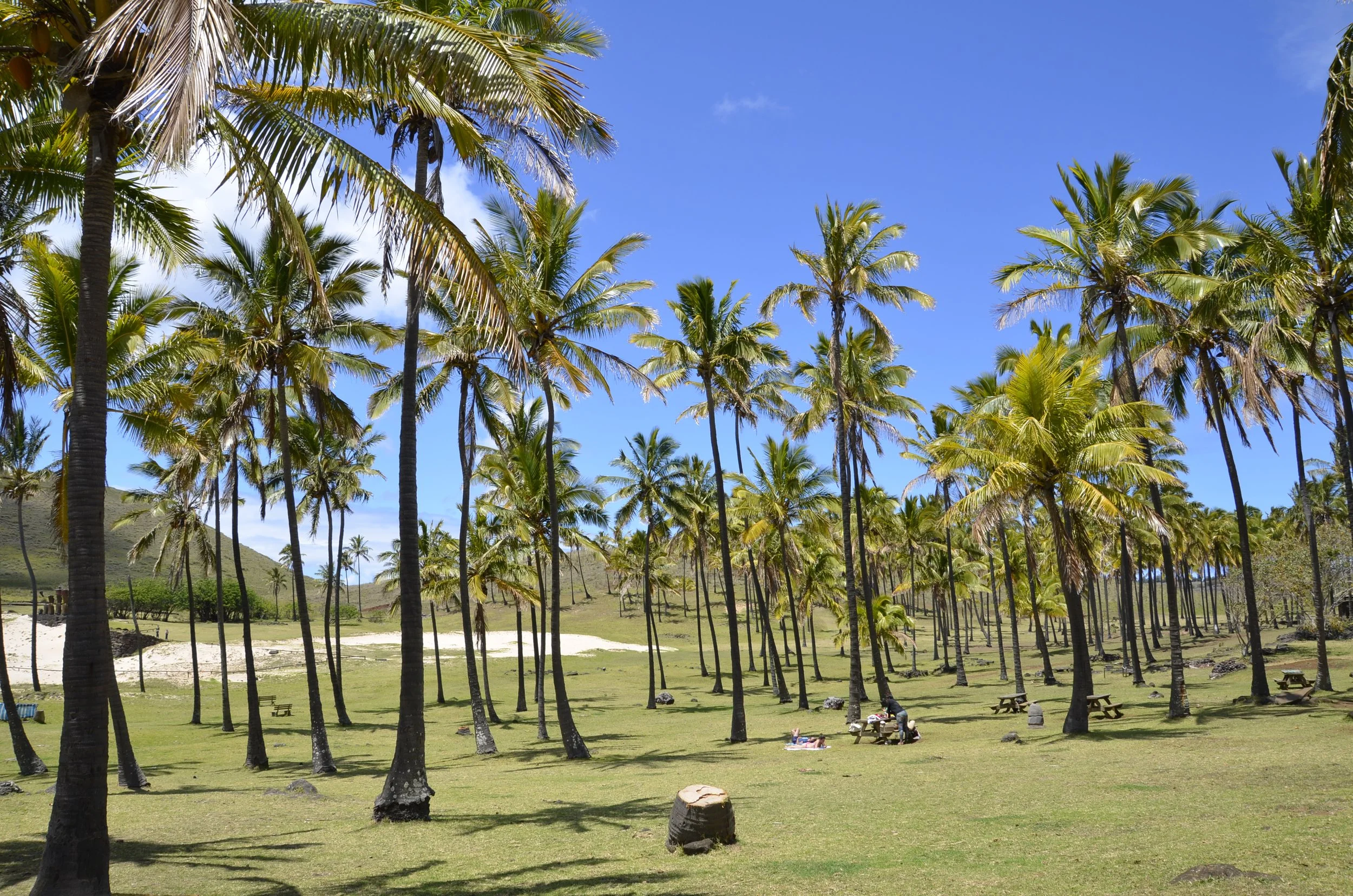Rapa Nui
That is the name of Easter Island in the native language. We arrived in South America in Santiago, Chile and had a few days to kill before our flight to Rapa Nui. For anyone who has followed this blog knows, we like to walk and hike…so we did. We climbed up Cerro San Cristobal (St. Cristobal hill) and got this great view of the city and the surrounding Andes…
… and the view from our hotel’s rooftop bar (Lisa & Steve in a bar? naaah!) at sunset was pretty sweet -
On Sundays, the city closes down a street that runs along the Mapocho River, for 5 hours in the middle of the day, so that bicyclists, skaters and runners/walkers can go for miles unimpeded.
It was a 5+ hour flight from Santiago to Rapa Nui. We found it very humorous that the most common carryon item was a box of Dunkin Donuts — and most people with them carried multiple boxes! Interesting fact about Rapa Nui - it is one of the world’s most remote inhabited islands. Closest land to the west is tiny Pitcairn Island at 1,289 miles away, and to the east is the coast of Chile at 2,182 miles away. This was our first glimpse of this isolated island -
I was surprised at how small it was - 14 miles long by 7 miles wide. The picture above is almost all of it, except for a small portion off to the left. How the first Polynesians found this speck in the middle of a vast ocean is way beyond me!
Across the road from our guesthouse, we admired the rugged coast in the golden hour before sunset…
… explored a sea cave all by ourselves…
… and were treated to a glorious sunset -
I usually end posts with sunsets, but I have so many neat pictures from our 4 days on the island, that I’m going to power on. :)
On our first full day on Rapa Nui, we rented a car and literally drove all around the island. There is currently a regulation that tourists have to have a local Rapa Nui guide with them when in the national park (which is 95% of the island), so we went to any site that didn’t have a guard shack or someone to tell us that we couldn’t go in.
Our first stop was to the site, Tahai, just north of the main town of Hanga Roa. This is a restored moai, with replica coral eyes (the only one on the island to have these):
Contrary to what you may have read in the past, moai do not look out to sea, but rather they are situated to watch over a village nearby -
One of my favorite places on the island was Anakena beach -
Just up the rise from the beach was an ahu (platform) with a set of restored moai -
I use the word “restored” because sometime in the 1700’s all moai on the island were toppled from their platforms, and most broken. This was believed to have been due to inter-tribal wars.
These are the only moai to still have the carvings on the back of the statues.
The statues are carved from volcanic rock called “tuff”, while the top knots (not hats) are carved from a different stone called scoria. This next picture shows the detail of carving -
The elongated ears and fingers denote a person of high rank. The long fingers actually depict fingernails, and it was interesting to see how many moai still had visible belly buttons.
Because this visit was in early afternoon, the fronts of the moai were in shadow, so we actually went back the next morning to get better pictures. (yes, I’m obsessive) :)
All of these have clearly defined arms and hands (see above), and I loved the detail on the noses and ears -
There are very few palm trees on the island, but because this beach had a grove of them, I’m going to close with a picture I think represents what most people think of when you say “Pacific island” -




